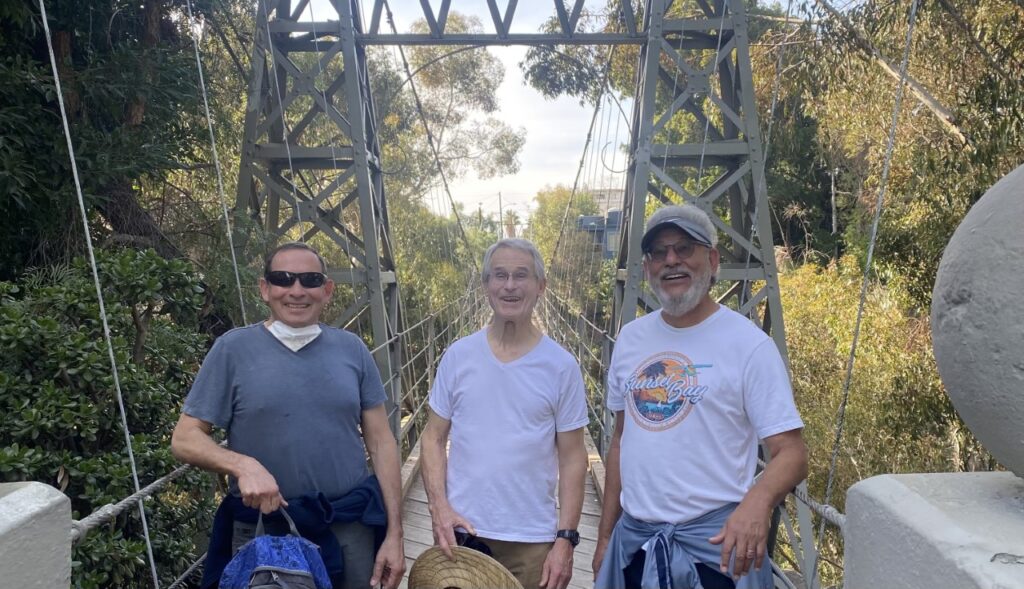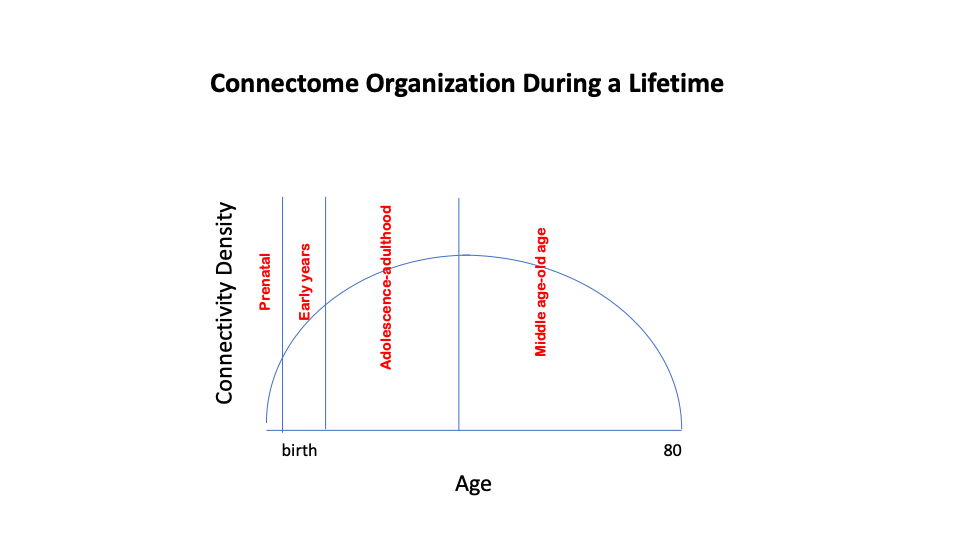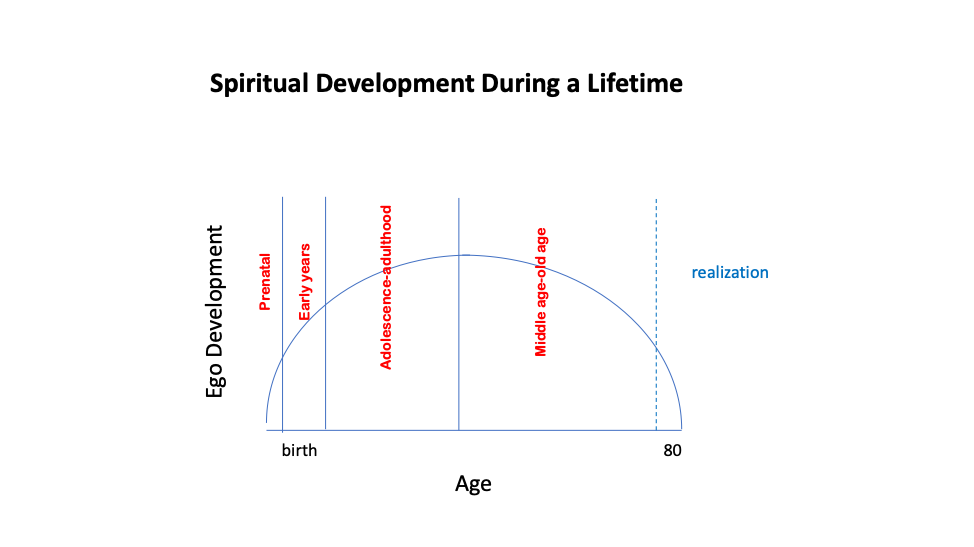
“We are not human beings having a spiritual experience; we are spiritual beings having a human experience.” – Pierre Teilhard de Chardin
What if mystics and spiritual masters are right about us being spiritual beings having a human experience? Is there anything in what we know about the brain and its development that may be more associated with such an idea than with the standard materialist explanation? I interpret a 2021 meta-analysis of brain connectivity by Edde and colleagues as evidence that we should not easily dismiss these types of alternative explanations.
A set of biological rules or algorithms govern brain connectivity changes during normal development, maturation, and aging and, forming and shaping the macroscopic architecture of the brain’s wiring network or connectome. The standard model, shown in the Figure below, predicts that as we develop prenatally and during the first few years, local neural connections form first, followed by more global connections. This initial growth occurs in parallel with synaptogenesis, where macroscopic connectome formation and transformation reflects an initial overgrowth and subsequent elimination of cortico-cortical fibers. For most of the middle period of development, we see a plateau in the process and a strengthening of these connections. As we reach old age, the prediction is that things reverse, with global connections losing strength and finally local connections being affected. This inversion of the developmental process during aging accords with the developmental models of neuroanatomy for which the latest matured regions are the first to deteriorate. The graph below illustrates this inverted U-function of brain connectivity during a lifetime.

Mostly, studies of the human connectome support this standard model. The quirk in Edde’s recent analysis is the unexpected observation that it is local networks that begin losing strength in aging, while global networks maintain or even increase. The implication is that we lose focused, specialized functions with aging, but maintain or strengthen global, integrative functions. If we are preparing for death, why would this be taking place?
For a potential explanation, let us turn to a simplified spiritual model of development that closely matches these new observations (see Figure below). Initially, an understanding of our true nature (the spiritual path) provides the insight that ego development, while natural, interferes with knowledge of who we really are. We gain insight that we form highly local and specialized functions early in order to protect our fragile sense of being. These processes strengthen during adolescence and early adulthood (ego development). Time and further insights (e.g., identifying exclusively with this ego) during middle age propel us to embark on a process described as ego-death or at least diminishment. We seek to undo the local and highly functional networks that arose during ego development. The outcome of this effort is a switch in perspective, which many term realization. This basically describes a switch from identification with ego-based processes to a sense of the larger unity of which we are part. Realization can occur at any time in development, but usually after some effort in reducing ego-based thinking. Realization means a major strengthening of the global networks associated with the unity experience. This is more in concert with the proposal that “in the fifth decade of life (that is, after a person turns 40), the brain starts to undergo a radical “rewiring” that results in diverse networks becoming more integrated and connected over the ensuing decades, with accompanying effects on cognition.”

Why do we have diminished memory function as we age? While clinical disorders such as dementia exacerbate this condition, the natural trend in aging is for a reduced capability. Why? Perhaps the materialist models are wrong and what we are seeing, as supported by Edde et al., is a reduction in localized functioning, while strengthening of the global unity functions. For me, this preparation to join this larger unity in death would seem like a better explanation for what is happening in aging. This is in contrast to the idea that “the networking changes likely result from the brain reorganizing itself to function as well as it can with dwindling resources and aging ‘hardware.’”
